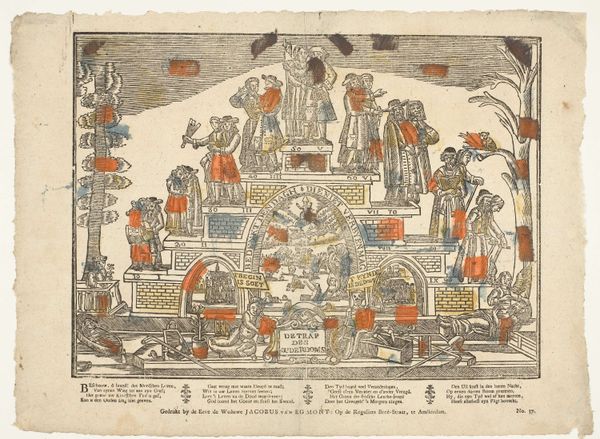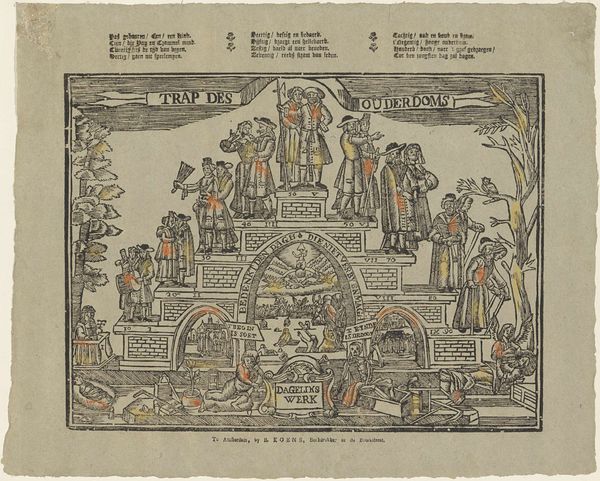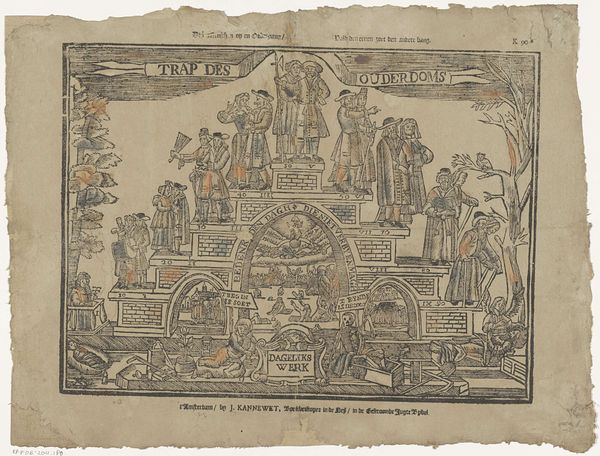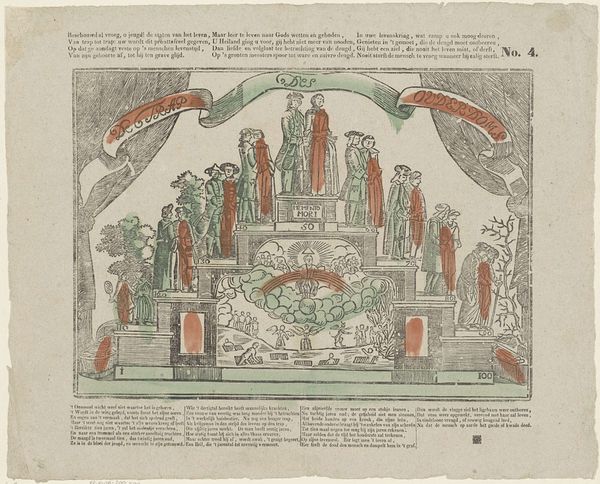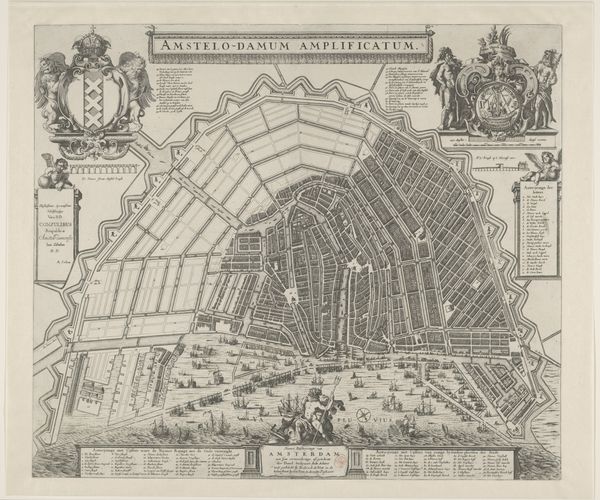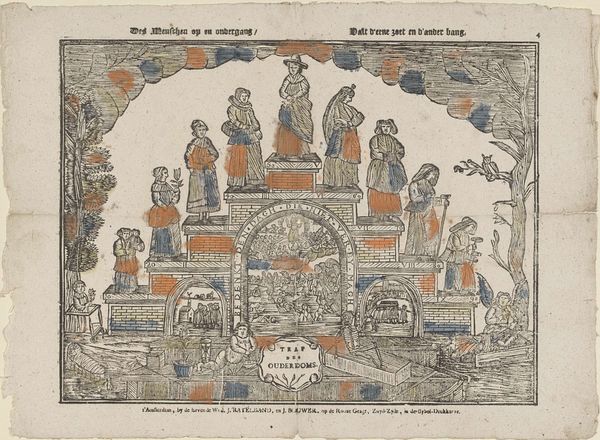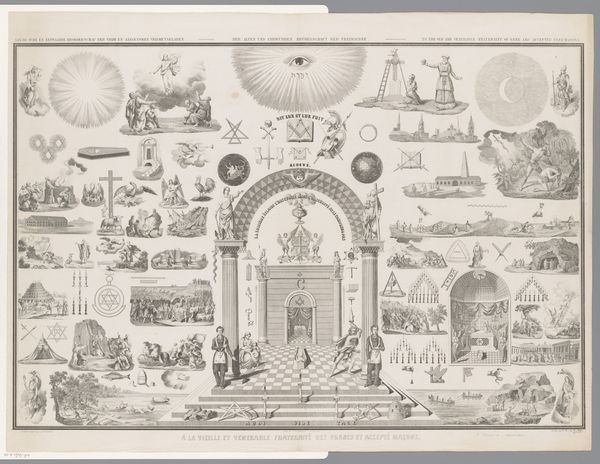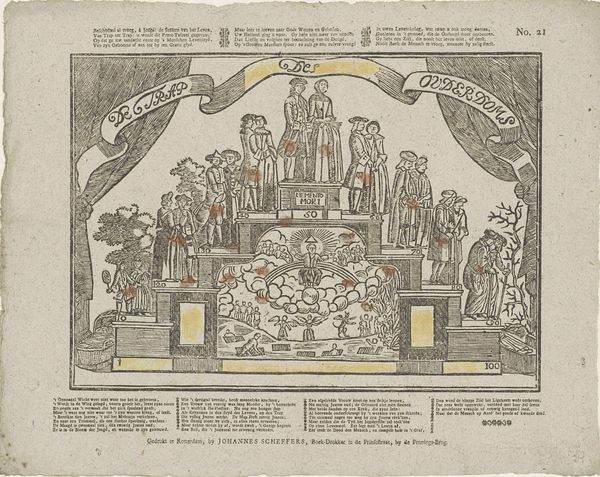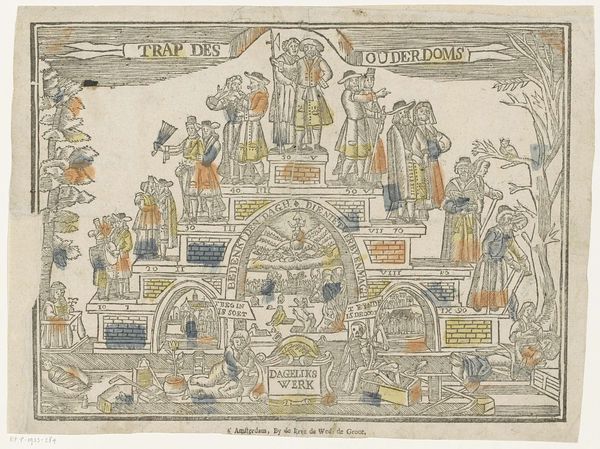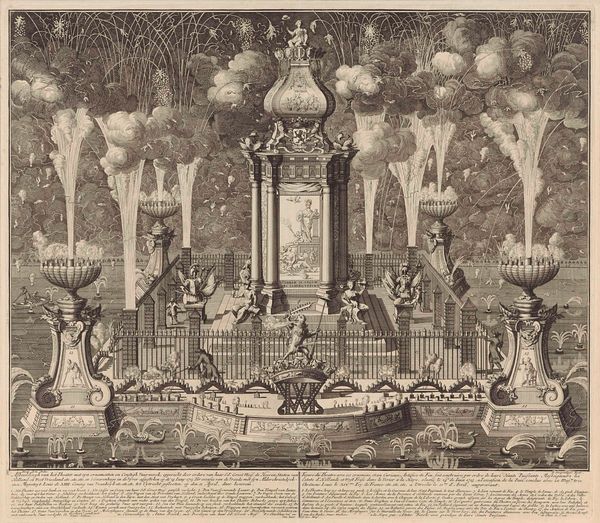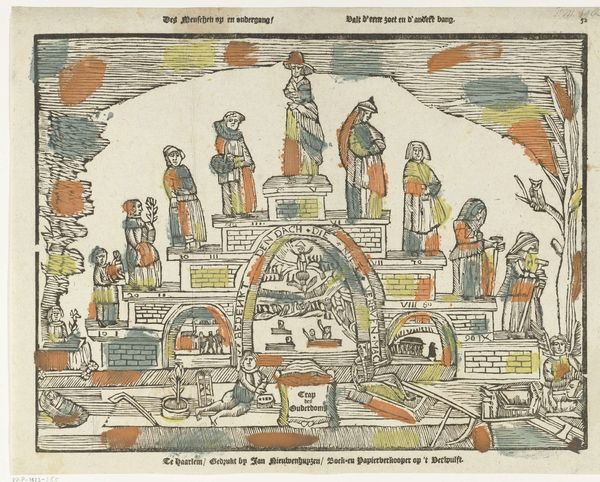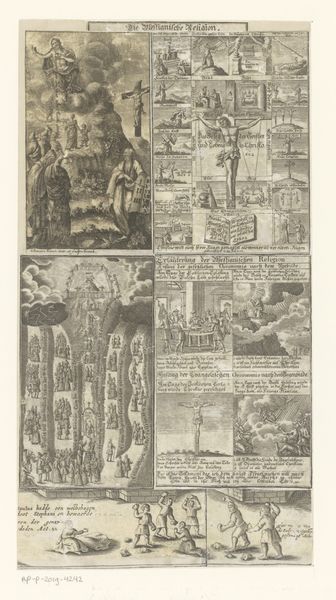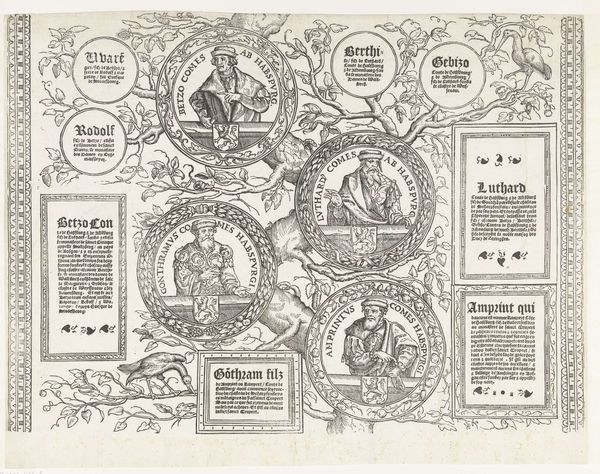
print, engraving
#
allegory
#
narrative-art
#
baroque
# print
#
figuration
#
momento-mori
#
line
#
engraving
Dimensions: height 310 mm, width 394 mm
Copyright: Rijks Museum: Open Domain
Curator: Looking at this print, the overwhelming impression is one of decline. A very deliberate and structured decline. Editor: You've hit upon something key there. The Rijksmuseum holds this engraving titled "Trap des ouderdoms," or "Stairway of Old Age" made between 1725 and 1780, by Johannes Kannewet. It presents a powerful allegory about aging and mortality. Curator: An allegory indeed, and a rather blatant one. We see a series of figures ascending and descending a staircase, each step marked with an age: twenties, thirties, forties and so on. The symbolism of the staircase is very obvious, of course, charting the human life from birth to death. Editor: Yes, the architecture creates this journey towards a predetermined end. Notice how the figures ascending are more upright, more vigorous? There's a sense of purpose in their stride that completely disappears as they age. And look what awaits them at the bottom—not just old age but the grave. This imagery directly engages with the early modern preoccupation with 'memento mori'. Curator: And how are women are presented on those stairs: modestly dressed, head covered and downcast. It is an embodiment of virtuous decline, reflecting a cultural attitude towards aging and womanhood prevalent at that time, a kind of melancholy acceptance, don't you think? The skeletal figure at the very bottom underlines this: all earthly concerns must eventually lead to dust. Editor: This is particularly compelling when viewed against the backdrop of the Dutch Golden Age, where individual achievements were celebrated. Here we find a public and potent reminder of human frailty. The print offered its 18th century audience a stark confrontation with the transient nature of existence. Its influence must have been significant. Curator: What I find most affecting, despite its didactic tone, is how this cultural artifact allows us to recognize familiar patterns through different cultural paradigms. The fears and anxieties about growing old may be framed differently but remains a fundamental human experience across all eras. Editor: Absolutely. By understanding these earlier visual languages, we gain deeper insights into enduring social narratives. It serves as a potent reminder that societal attitudes towards aging are shaped by prevailing philosophical currents, often echoing and questioning dominant ideologies.
Comments
No comments
Be the first to comment and join the conversation on the ultimate creative platform.
